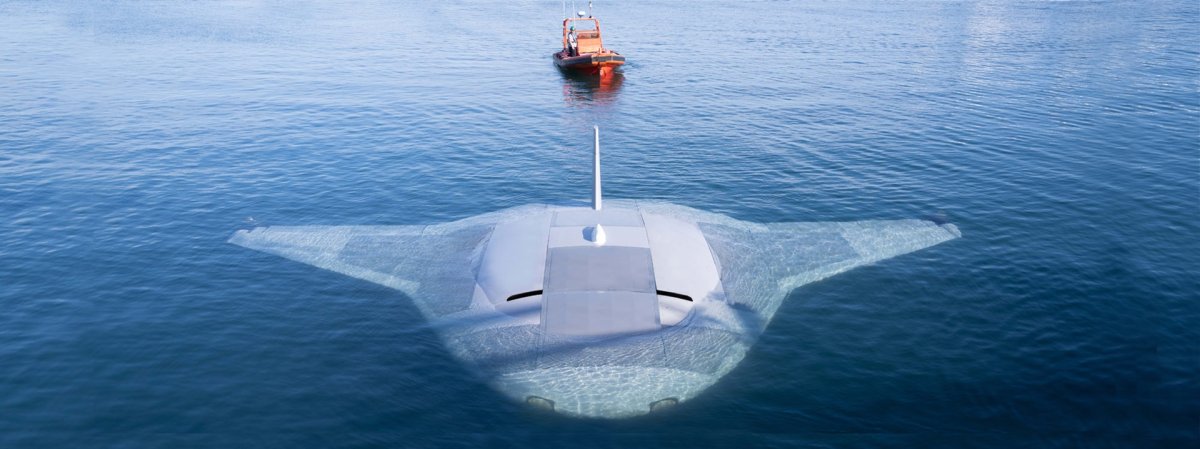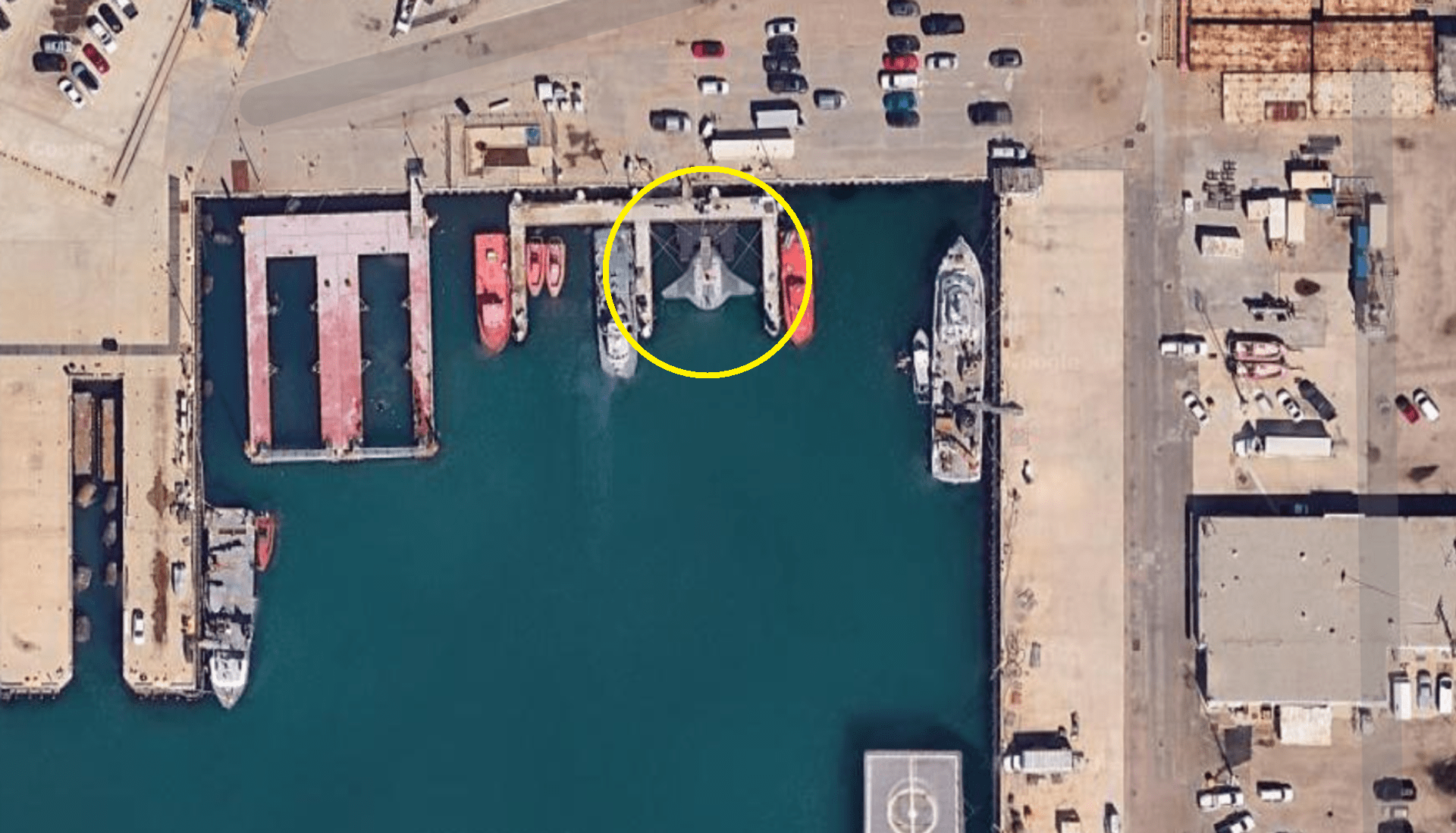A secretive U.S. Navy submarine drone, dubbed the “Manta Ray,” has been discovered in full view anchored at the Port Hueneme naval base in California, according to recent satellite images visible on Google Maps.
Developed by Northrop Grumman, the high-tech unmanned aquatic vehicle is part of a cutting-edge Naval project aimed at creating a new class of underwater drones capable of executing long-duration missions without human intervention.
Named after the massive “winged” fish, the Manta Ray resembles a Star Wars-like fighter and is equipped with several payload bays of various sizes to support a wide range of naval missions.
Google Earth / Maxar
Northrop Grumman says that the Manta Ray operates autonomously, eliminating the need for any on-site human logistics. It features energy-saving capabilities that allow it to anchor to the seafloor and “hibernate” in a low-power state.
The Manta Ray’s modular design facilitates easy shipment in five standard shipping containers, enabling rapid expeditionary deployment and in-field assembly worldwide.
Earlier this year, the Navy reported successful exercises with the drone off the coast of southern California, which coincides with where it was spotted on Google Maps. The exercises showcased its hydrodynamic performance, including submerged operations using all the vehicle’s modes of propulsion and steering: buoyancy, propellers and control surfaces.
The Navy has spent more than three months testing the submersible, according to some reports.
“Our successful, full-scale Manta Ray testing validates the vehicle’s readiness to advance toward real-world operations after being rapidly assembled in the field from modular subsections,” said Dr. Kyle Woerner, Defense Advanced Research Projects Agency’s (DARPA) program manager for the project.

Northrop Grumman
The Department of Defense is increasingly interested in uncrewed technologies and their battlefield applications. Defense analysts speculate that the Manta Ray’s development is a strategic move by the Pentagon to counter advancements in underwater drone technology by other nations, particularly Russia and China.
Last year, Russia’s navy announced plans to acquire 30 Poseidon drones, torpedo-shaped robotic mini-submarines that Moscow claims can reach speeds of 100 knots. China displayed a scale model of a Poseidon drone, featuring a cutaway showing its internal structure, at the Defence Services Asia exhibition in Kuala Lumpur this year.
With the Manta Ray initiative, the Navy seeks to establish a hybrid fleet, empowering sailors and Marines with smart machinery and the sensors or weapons they carry.
Do you have a story Newsweek should be covering? Do you have any questions about this story? Contact LiveNews@newsweek.com
Uncommon Knowledge
Newsweek is committed to challenging conventional wisdom and finding connections in the search for common ground.
Newsweek is committed to challenging conventional wisdom and finding connections in the search for common ground.

